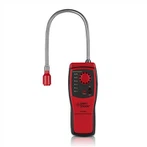Common troubleshooting methods for digital multimeter failures、
Digital multimeter troubleshooting should usually start with the power supply. For example, after turning on the power, if the liquid crystal cell appears, you should first check whether the voltage of the 9V laminated battery is too low; whether the battery lead is disconnected. Finding faults should follow the order of "first inside and then outside, first easy and then difficult". Digital multimeter troubleshooting can be roughly carried out as follows.
1. Appearance inspection.
Is the temperature rise of batteries, resistors, transistors, and integrated blocks that can be touched by hand too high? If the newly installed battery generates heat, the circuit may be short-circuited. In addition, the circuit should also be investigated for disconnection, desoldering, mechanical damage, etc.
Second, check the operating voltage at all levels.
Check the operating voltage of each point and compare it with the normal value. First, ensure the accuracy of the reference voltage. It is best to use a digital multimeter of the same type or similar to measure and compare.
Three, waveform analysis.
Use an electronic oscilloscope to observe the voltage waveform, fluctuation, period (frequency), etc. of each key point of the circuit. For example, if the clock vibrator starts to vibrate, whether the vibration frequency is 40kHz. If the oscillator has no output, it means that the internal inverter of TSC7106 is damaged, or the external components may be open. Observe that the waveform at pin {21} of TSC7106 should be a 50Hz square wave, otherwise, the internal 200 frequency divider may be damaged.
Fourth, measure the component parameters.
For components within the fault range, online or offline measurement should be performed, and parameter values should be analyzed. When measuring resistance online, the influence of components connected in parallel with it should be considered.
5. Eliminate hidden faults.
Hidden faults refer to the faults that appear and disappear from time to time, and the appearance is good and bad. This kind of failure is relatively complicated, and the common factors include solder joints, loose, loose connectors, poor contact of transfer switches, unstable components, and broken leads. In addition, it also includes some external factors. For example, the ambient temperature is too high, the humidity is too high, or there are intermittent strong interference signals nearby.






